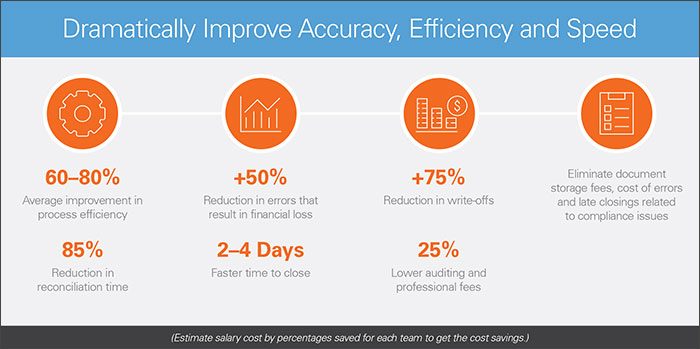Sponsored Content by Fiserv
Not Ready for Insurtech? Here’s Proven Automation You Can Use Now!

Sure, insurtech sounds great – who doesn’t want to modernize labor-intensive and time-consuming insurance processes, from underwriting and distribution to claims and customer service? But the truth is, this naturally risk -averse industry will adopt changes only cautiously and strategically, and very few new technologies have been road-tested enough to demonstrate lasting impact.
And of course, regulators will have a significant say on what is permissible.
But while the trend unfolds, automation has been proven to cut inefficiencies and streamline workflows. The industry’s administrative functions are undeniably laden with overhead costs associated with paper-based processes that demand copious time, labor and materials.
Why not pick one essential process – reconciliation – where automation can make a significant impact on the bottom line and reduce the risk of compliance misses and mistakes.
“In the insurance industry, every fraction of a cent that can be saved in time, resources, processing and operations goes directly to the bottom line,” said Renata Sheyner, senior product manager of Frontier™ Reconciliation, the end-to-end reconciliation and certification solution offered by Fiserv.
“Additionally, the more data that insurers add to their business and analyze through relatively untested insurtech innovations, the greater the need for automated, reliable transaction-level operational and balance sheet reconciliation.”
Why Automate Reconciliation?

Renata Sheyner, Senior Product Manager
Most companies currently reconcile their books with two tools — a highlighter and a spreadsheet.
“I have seen conference rooms filled with filing cabinets to be sorted through,” Sheyner said. “Sometimes I ask potential clients, ‘How many different colored highlighters are in your desk drawer?’ Because that’s how it’s done without automation – highlighting items on printed reports, or using Excel spreadsheets to keep track of everything.”
Without automation, reconciliation at the transaction level can be a time- and labor-intensive process that leaves more room for human error. And errors increase the risk of running afoul of regulations. Reducing the risk of error in the books can save companies thousands in non-compliance fines when it’s time for an audit.
“A lot of CFOs are now personally liable for misrepresentation of financial statements. There are some pretty significant implications of non-compliance and not having your books complete,” Sheyner said. “There’s a huge benefit in incorporating all of your documentation into a system with built-in internal and external audit controls.”
In an intensely regulated industry, the importance of accuracy and transparency can’t be overstated.
Integration of data and matching transactions using an automated solution can cut the risk of error by as much as 50 percent, while allowing a more holistic and transparent view into the financial close process. An automated system with built-in audit controls can also ensure that standards dictated by Dodd-Frank and Sarbanes-Oxley Act are met.
A centralized view of transactions and the overall reconciliation lifecycle also makes it easier to mitigate the risks of fraud and write-offs related to unexplained exceptions. End-to-end reconciliation automation, combined with data agnosticism, identifies and resolves more exceptions. This can lead to an overall 75 percent reduction in write-offs.
“Insurers need a data-agnostic tool that can pull in massive amounts of disparate data around claims, policyholder details, equity fund balances, payment and disbursement statuses and more, and funnel it through an automated matching system to pair the right data with the right transaction,” Sheyner said.
Frontier Reconciliation provides that very detailed transaction matching, and can match data fields on a one-to-one, one-to-many, or many-to-many basis. Transaction-level matching with multiple fields reduces the need for manual intervention, “which allows employees to spend their time on value-added tasks like managing or investigating exceptions,” Sheyner said.
Among Frontier Reconciliation users, reducing manual tasks and implementing automated reconciliation can experience a 60 – 80 percent gain in efficiency.
The cost savings are also hard to ignore. On average, financial companies using an automated reconciliation solution save 25 percent on audits by providing electronic access to accounts and required approvals.
Taking paper out of the equation also saves the costs of buying paper and printing materials, reduces the manpower and hours needed to process records, and can speed up financial close by two to four days, on average.

“We frequently help accounting and finance teams build a strong internal business case for automated reconciliation and certification to present to senior management,” Sheyner said.
In addition to mitigating risks from non-compliance, fraud, and write-offs, an automated reconciliation process can also head off reputation risk.
“The reputational risk from restatement may not be monetary initially, but over time can certainly hurt an organization pretty severely within the market among their policyholders, peers and regulators,” Sheyner said.
Case in Point
Several large multi-line insurers in the U.S. rely on Frontier Reconciliation, including a top 10 multi-line carrier with over $43 billion in direct premiums written (DPW) who has trusted Frontier Reconciliation for the past 10 years.
“When they implemented Frontier Reconciliation a decade ago, they had a team of 40 people working on 300 reconciliations a day using Excel worksheets. Since automating the process, they’ve been able to refocus the team to eight who now manage more than 3,000 reconciliations a day,” Sheyner said. “And those other employees have been able to focus on other valuable strategic projects – ones they were hired to manage.”
Frontier Reconciliation also helps this leading Fortune 100 carrier match policyholders with premium payment data —like what type of payment was received, who received it and in what form (check, ACH, direct debit) — and track other information like claims data, coverage and payout limits, and outstanding disbursements.
“They can see in real time exactly how many outstanding payments there are and how many disbursements have been made. They can check on aging claims, which is important because the longer the claim sits open, typically the more expensive it gets,” Sheyner said. “If something is outstanding for 30 days, they can ensure processes are in place to bring those files to a close.”
Stronger compliance, reduced costs, and potentially faster claims closing … these are the insurtech promises that an automated reconciliation solution can bring to the industry today.
To learn more, visit: Frontier Reconciliation for Insurers.
This article was produced by the R&I Brand Studio, a unit of the advertising department of Risk & Insurance, in collaboration with Fiserv. The editorial staff of Risk & Insurance had no role in its preparation.










